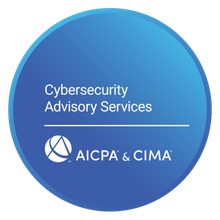Data Encryption for Tax Professionals: Best Practices Explained
Data security is of paramount importance in the tax profession, where sensitive financial and personal information is handled daily. As cyber threats continue to evolve, tax professionals must adopt robust measures to protect client data from unauthorized access. One such crucial measure is data encryption. In this article, we will delve into the best practices for data encryption tailored specifically for tax professionals. By understanding the fundamentals of data encryption and implementing the recommended practices, tax professionals can enhance the security of their clients' information and mitigate the risk of data breaches. So, let's explore the world of data encryption and unlock the best practices to safeguard sensitive tax data.
Understanding Data Encryption
Data encryption serves as a critical safeguard for tax professionals to protect sensitive information from unauthorized access. At its core, data encryption is the process of converting plaintext into ciphertext, making it unreadable to anyone without the corresponding encryption key. By employing strong encryption algorithms, tax professionals can ensure the confidentiality and integrity of client data.
Encryption Algorithms
Various encryption algorithms are used in the industry to secure data. These algorithms employ mathematical functions to transform data into ciphertext. Common encryption algorithms include Advanced Encryption Standard (AES), RSA, and Triple Data Encryption Standard (3DES). Each algorithm has its strengths and suitability for different scenarios. Tax professionals should choose robust encryption methods based on industry standards and compliance requirements.
Working Principle
Data encryption operates on the principle of two essential components: the encryption algorithm and the encryption key. The encryption algorithm is responsible for transforming data into ciphertext, while the encryption key is used to lock and unlock the data. Only individuals with the correct encryption key can decrypt the ciphertext and access the original data. This dual-component approach provides a strong layer of protection against unauthorized access.
Benefits of Data Encryption
Implementing data encryption offers several benefits for tax professionals. Firstly, it ensures the confidentiality of sensitive tax data, preventing unauthorized individuals from accessing or reading it. Secondly, encryption maintains data integrity by detecting any tampering or modification attempts. Lastly, encryption helps tax professionals meet compliance requirements and legal obligations by demonstrating due diligence in protecting client information.
By comprehending the fundamentals of data encryption and the role it plays in securing tax data, tax professionals can lay a strong foundation for implementing best practices in their day-to-day operations. In the next section, we will delve into key data encryption best practices specifically tailored for tax professionals.
Key Data Encryption Best Practices for Tax Professionals
-
Choosing Strong Encryption Methods and Algorithms: Select encryption methods and algorithms that align with industry best practices and compliance requirements. Consider using widely recognized encryption algorithms such as AES with a key size of 256 bits. Stay updated on advancements in encryption technology and adopt stronger algorithms as needed.
-
Implementing Robust Encryption Key Management: Maintain a robust encryption key management system to ensure the security of encryption keys. Use secure key storage mechanisms and enforce strong access controls. Regularly rotate encryption keys and retire any compromised or obsolete keys to minimize vulnerabilities.
-
Encrypting Data at Rest and in Transit: Encrypt data both at rest and in transit to protect it from unauthorized access. Implement encryption mechanisms for databases, file servers, backups, and any other storage systems housing sensitive tax data. Additionally, use secure protocols such as Transport Layer Security (TLS) to encrypt data in transit.
-
Securing Backups and Archives with Encryption: Ensure that backups and archives of tax data are encrypted. Apply encryption to the entire backup process, including data at rest and during transfer. Implement strong authentication mechanisms to prevent unauthorized access to backup files and verify the integrity of restored data.
-
Protecting Encryption Keys with Strong Access Controls: Implement stringent access controls to protect encryption keys. Limit access to authorized personnel only and enforce strong authentication measures. Regularly audit and monitor key access activities to detect any unauthorized or suspicious actions.
By adhering to these key data encryption best practices, tax professionals can enhance the security of their clients' sensitive data. In the next section, we will explore the integration of encryption in tax professionals' workflow and the importance of identifying and encrypting sensitive data.
Integration of Encryption in Tax Professionals' Workflow
-
Identifying Sensitive Data that Requires Encryption: Conduct a comprehensive assessment to identify the types of sensitive data that tax professionals handle, including personally identifiable information (PII), financial records, and confidential client data. By understanding the specific data elements that require protection, tax professionals can implement targeted encryption measures.
-
Implementing Encryption in Tax Software and Databases: Work closely with tax software providers to ensure encryption capabilities are integrated into the software systems used for managing tax data. Encrypt sensitive data fields within databases, such as Social Security numbers, financial account details, and addresses. Encrypting data within tax software and databases adds an extra layer of protection against unauthorized access.
-
Securing Communication Channels with Encryption: When communicating with clients or other professionals, utilize secure communication channels that employ encryption. Encrypted email services, virtual private networks (VPNs), and secure file transfer protocols (SFTP) can safeguard the confidentiality and privacy of sensitive tax information during transmission.
-
Encrypting Emails and File Transfers Containing Tax Information: Encrypt emails and attachments containing tax-related information before sending them to clients or colleagues. Encryption adds an additional safeguard against interception or unauthorized access to the email content or attachments. Utilize email encryption tools or secure file transfer solutions to ensure end-to-end encryption.
By seamlessly integrating encryption into their daily workflow, tax professionals can protect sensitive data from unauthorized access, both within their systems and during communication. In the next section, we will explore compliance and legal considerations related to data encryption for tax professionals.
Compliance and Legal Considerations
-
Overview of Relevant Regulations: Familiarize yourself with relevant regulations and standards that govern data security and privacy in the tax profession. Examples include the General Data Protection Regulation (GDPR), California Consumer Privacy Act (CCPA), and industry-specific regulations like the Internal Revenue Service (IRS) guidelines. Stay informed about any updates or changes to these regulations.
-
Compliance Requirements for Tax Professionals: Understand the specific compliance requirements that apply to tax professionals regarding data protection and encryption. These requirements may vary depending on the jurisdiction and the type of data handled. Implement the necessary measures to meet regulatory obligations and protect client data, ensuring compliance with applicable laws.
-
Legal Implications of Data Breaches and the Importance of Encryption: Recognize the legal implications of data breaches and the potential consequences for tax professionals. In the event of a data breach, encryption can play a crucial role in demonstrating due diligence and minimizing liability. Properly encrypted data may be exempted from certain reporting requirements, reducing the impact on affected individuals and the business.
-
Engaging Legal and Compliance Experts: Consider seeking advice from legal and compliance experts specializing in data security and privacy. They can provide guidance on compliance requirements, assist in developing policies and procedures, and help navigate the complex legal landscape. Engaging with professionals ensures that tax professionals stay updated and compliant with evolving regulations.
By understanding and adhering to compliance and legal considerations, tax professionals can proactively protect sensitive data, mitigate legal risks, and maintain trust with clients. In the next section, we will address the challenges of implementing data encryption and provide solutions to overcome them.
Encryption Implementation Challenges and Solutions
Implementing data encryption in a tax professional's workflow can present certain challenges. However, with proper strategies and solutions, these challenges can be effectively addressed:
-
Complexity and Resource Constraints: Implementing encryption may seem complex, especially for tax professionals with limited technical expertise. It is crucial to collaborate with IT professionals or cybersecurity experts to design and implement encryption solutions tailored to the specific needs of the tax practice. This collaboration ensures efficient deployment and ongoing management of encryption measures.
-
Integration with Existing Systems: Integrating encryption into existing tax software, databases, and communication channels can pose compatibility and integration challenges. It is essential to select encryption solutions that seamlessly integrate with the existing technology infrastructure. Consult with software vendors and encryption solution providers to find compatible options and seek their guidance during the implementation process.
-
User Adoption and Training: Successful encryption implementation requires user buy-in and adoption. Tax professionals and staff should receive comprehensive training on encryption best practices, including how to identify sensitive data, encrypt files and emails, and manage encryption keys. Training sessions, workshops, and informational resources can promote awareness and facilitate the smooth adoption of encryption practices.
-
Balancing Security and Usability: Striking a balance between data security and user convenience is crucial. While encryption adds a layer of security, it should not impede productivity or hinder day-to-day operations. Seek encryption solutions that provide a user-friendly experience without compromising the security of sensitive tax data. Additionally, consider implementing encryption practices with minimal disruption to workflow processes.
By recognizing these challenges and implementing the appropriate solutions, tax professionals can successfully overcome barriers to data encryption implementation. In the next section, we will discuss the significance of training and education for tax professionals regarding encryption best practices.
Training and Education for Tax Professionals
-
Importance of Training on Encryption Best Practices: Education and training play a vital role in ensuring the successful implementation and adoption of encryption best practices. Tax professionals and staff should receive comprehensive training on the fundamentals of data encryption, understanding encryption algorithms, encrypting sensitive data, managing encryption keys, and recognizing potential vulnerabilities.
-
Providing Guidance and Resources: Offer tax professionals with guidance documents, best practice guides, and resources that outline step-by-step instructions for implementing encryption measures. These resources should address common challenges, provide troubleshooting tips, and highlight real-world scenarios to enhance comprehension and practical application.
-
Creating a Culture of Cybersecurity Awareness: Promote a culture of cybersecurity awareness within the tax practice by emphasizing the importance of encryption and data protection. Encourage regular communication and discussions about encryption best practices, share case studies highlighting the impact of data breaches, and engage employees in ongoing training sessions and awareness campaigns.
-
Collaboration with IT Professionals and Cybersecurity Experts: Collaborate with IT professionals and cybersecurity experts to develop tailored training programs and workshops focused on encryption best practices. These professionals can provide valuable insights, share industry trends, and offer guidance on the latest encryption technologies and tools.
-
Staying Updated with Evolving Encryption Technologies: Encryption technologies continue to evolve, with new algorithms and methods emerging. Encourage tax professionals to stay updated with the latest advancements and trends in encryption. Attend industry conferences, webinars, and workshops to gain insights into cutting-edge encryption practices and ensure the tax practice remains at the forefront of data protection.
By prioritizing training and education, tax professionals can equip themselves with the necessary knowledge and skills to implement and maintain encryption best practices effectively. In the conclusion, we will recap the key points discussed in the article and emphasize the importance of data encryption for tax professionals.
Securing Tax Data: The Power of Encryption
In this article, we have explored the critical role of data encryption in safeguarding sensitive information for tax professionals. From understanding the fundamentals of data encryption to implementing best practices, we have covered key aspects to ensure the confidentiality, integrity, and compliance of tax data. Now, let's recap the key takeaways and highlight the significance of data encryption for tax professionals.
-
Protecting Sensitive Information: Data encryption serves as a powerful shield, protecting sensitive tax data from unauthorized access. By converting data into unreadable ciphertext, encryption ensures that even if an attacker gains access to the data, they cannot decipher it without the encryption key.
-
Best Practices for Data Encryption: We have discussed several best practices for tax professionals to follow when implementing data encryption. These include choosing strong encryption methods and algorithms, robust encryption key management, encrypting data at rest and in transit, securing backups and archives, and protecting encryption keys with strong access controls.
-
Compliance and Legal Obligations: Tax professionals must adhere to various regulations and legal obligations concerning data security and privacy. Implementing encryption demonstrates due diligence in protecting client information and can assist in meeting compliance requirements. It also helps mitigate legal risks associated with data breaches.
-
Challenges and Solutions: Implementing data encryption can present challenges such as complexity, integration issues, user adoption, and balancing security with usability. However, by collaborating with IT professionals, providing training and education, and staying updated with evolving technologies, tax professionals can overcome these challenges and ensure successful encryption implementation.
Data encryption is not a choice but a necessity for tax professionals. It strengthens the protection of sensitive tax data, instills client trust, and mitigates the risks of data breaches. By adopting best practices, staying updated on regulations, and fostering a culture of cybersecurity awareness, tax professionals can establish a secure environment that safeguards the confidentiality and integrity of client information.
Remember, encryption is an ongoing process. As technology advances and threats evolve, tax professionals must remain vigilant, continuously reassess their encryption strategies, and adapt to emerging encryption practices. Together, let's embrace the power of encryption and fortify the security of tax data in an increasingly digital world.
To take the first step towards strengthening your data security, we invite you to schedule a discovery call with our team of cybersecurity experts. We specialize in assisting tax professionals like you and can provide tailored recommendations to meet your specific needs. Don't wait until it's too late – secure your tax data and maintain the trust of your clients. Contact us today to book your discovery call and embark on the path to enhanced data protection.






